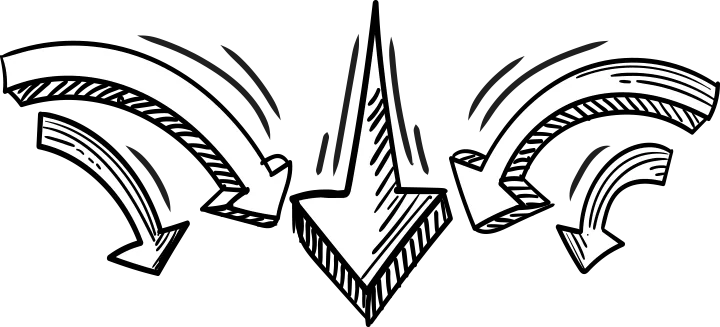In October I was fortunate enough to attend one of the most informative and fun conferences I have been to in several years – BlogWorld. The conference overall was fantastic. They had an affiliate track for the first time and it was very well attended. Many of us in the affiliate community noticed that “affiliate marketing” was relatively new to this audience of bloggers. Some even said that 90% of the attendees had no idea what affiliate marketing is and how to get involved, let alone that they can use these relationships to monitize their blogs.
Because of this, I wanted to put together a very top level run down of what it is and how they can get started. NOTE: if you are a seasoned affiliate marketer, then you won’t get much from this article. This is intended for those that are completely new to this area of performance marketing. It is meant as a primer into the world of affiliate marketing and doesn’t demonstrate any advanced practices.
Ok, now that that is out of the way, let’s get going. I’ll start at the beginning. Wikipedia definition: “Affiliate marketing is an Internet-based marketing practice in which a business rewards one or more affiliates for each visitor or customer brought about by the affiliate’s marketing efforts.”
Here is my definition: Affiliate marketing is an internet-based marketing practice where businesses reward partners for a required action. These actions may be clicks, impressions, sales, email signups, lead form completions, RSS subscriptions and more. It is a performanced based relationship, the business only pays when something is performed.
Retailers typically reward affiliates for a sale. For example: Customer John Doe comes to your blog and reads your newest post. You have a banner (ad) on your website for Zappos.com Shoes. John clicks on that banner, goes to Zappos and purchases a $100 pair of shoes. Zappos then rewards you a % of that $100 for referring that sale. Most retailers work that way.
Mortgage companies, debt consolidation and other types of companies offer a bounty for referring someone who becomes a lead. That typically means they fill out a form to get more information, sign up for the site, become a member of a site or other lead generation activities. The bounties can range from $1 to $300 depending on the industry and the company offering it.
Make sense? It’s pretty simple, instead of paying for impressions up front, the affiliate (you) doesn’t get paid until something happens (a purchase, signup, click). At first you may be thinking, well I won’t get paid unless something happens, but that is out of my control. Correct, but after doing this for 10 years and managing over 35 programs, I can tell you that many affiliates make hundreds of thousands of dollars through affiliate programs. The money is there and it the opportunity can be much higher with affiliate programs if you are able to match the affiliate program with what your users are looking for.
Why is this so much easier, at times, then finding your own advertisers?
Affiliate Networks.
Companies such as Commission Junction, Linkshare, Google Affiliate Network, Share A Sale and AvantLink provide a marketplace where affiliates (bloggers, content developers, web site creators) can partner with many different businesses (merchants). These networks also provide a method to track any transactions that may result from you working with a merchant.
Basically, here is how it works:
You join the network, apply to the programs you think will be successful on your site, and then grab some links. You will be able to grab banners and text links and many merchants and networks provide some advanced linking that I will talk about in another post in this series. The code you grab for your banners or links contains all the necessary tracking information to associate that user to your account. Any purchases that user makes will be registered into your account.
That is basically it.
Here are some things to look at when you are evaluating an affiliate program:
- Commission Rate – each network will allow you to see the commission rates for similar programs. Use this as one way to evaluate the programs you want to work with.
- EPC – this is earnings per one hundred clicks and reflects the amount you can expect to earn from a program for each set of 100 clicks you send. This is a good way to see how they are converting, but not all merchants show this.
- Tools – look at the set of distribution tools they offer. Do they offer a datafeed, any contextual tools?
- Return Days/Cookie Days – The more of these the better. These are the number of days from the initial visit to the merchant’s site from yours, that you will get credit if that user makes a purchase. Wow, a mouthful huh? For example, John from our previous example, clicks on a Zappos.com (a new client of JEBCommerce 🙂 ), on Monday. Zappos.com, for this example, has a cookie day of 3. John doesn’t purchase until Wednesday. Because they offer 3 cookie days, you will get credit for that sale
There are many other things you need to look at when evaluating a partner to work with and promote through their affiliate program. I want to take a more in depth look into each affiliate network. I’ll do that in my second post of this series.
Don’t forget to subscribe to our feed!
Read more in #2 of our Series – The Affiliate Networks.

